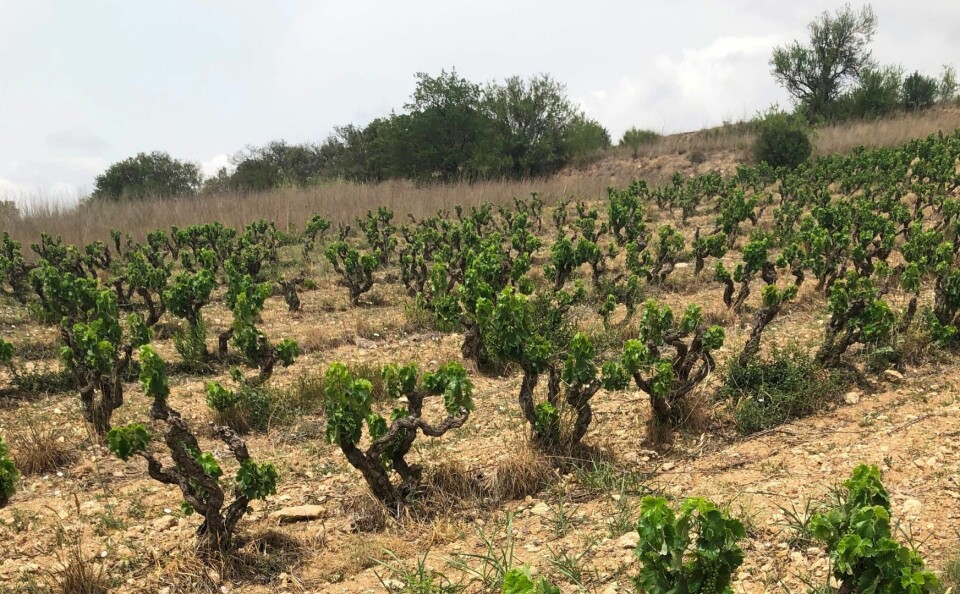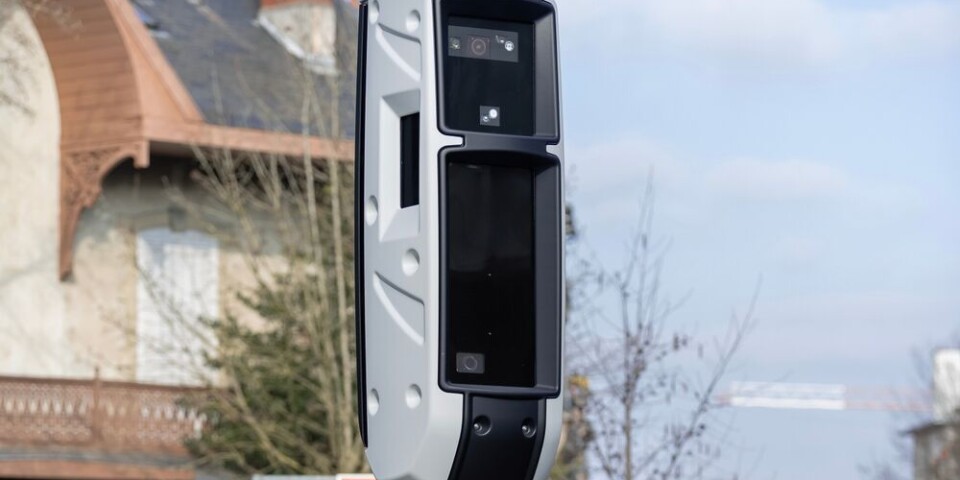-
Learning French: nouns that even native speakers commonly misgender
‘The struggle is real’, says our French writer Théophile Larcher - see if you can score higher than him in our mini quiz
-
French ski resort in the Pyrenees announces end of skiing due to lack of snow
Authorities are instead planning a ‘four season model’ – but some locals are not happy
-
Know your cheeses and their seasons: which to eat in France in February
Cow’s milk cheeses dominate as winter comes to an end
Winemakers face new problems each year due to climate change in France
Vigneron Jonathan Hesford explains the unprecedented impact of extreme weather on his work in the vineyard

Up until 2016, when people used to ask me whether it was going to be a good year, I would reply “It’s always a good year in the Roussillon”.
The Mediterranean climate was much more consistent than Atlantic regions like Bordeaux or Continental climates like Burgundy.
However, since then, nearly every year has dealt us climatic surprises that have made the vintages and the yields less consistent.
This has meant that the styles of the wines and the volumes that we have for sale have varied more from year to year than they did before 2016.
Read more: How winemakers in France combat the effects of climate change
Extreme weather events cause the most problems
Scientists now talk about Climate Change rather than Global Warming because although the planet is getting hotter overall, it is the increased frequency and intensity of extreme weather events that are causing the most problems.
We see reports of floods, freezes, storms, droughts and heat-waves on our news channels almost every week.
These climatic changes have caused death and destruction to humans as well as to wildlife, eco-systems and coastlines. Relatively speaking, the impact on viticulture and the wine industry is minor, but it is still of concern.
Impact of a heatwave on vineyards is complex
The media and the layman make the false assumption that hotter weather just results in wines of increased alcohol levels.
Alcohol levels are influenced by temperature; that’s why wines from the Languedoc are generally more alcoholic than those from the Loire. However, the impact of a heat wave is a bit more complex.
First of all, it depends on the time of year it occurs.
A hot spring will encourage the vines to bud and flower early. If that warm weather continues through the summer, the grapes may ripen more quickly and result in an earlier harvest.
This was the assumed wisdom of the past in predicting ‘good’ years.
In northerly regions, early bud-burst can lead to increased frost risk if there is a big freeze shortly after, as there was in 2021 in some wine regions.
If a hot spring is followed by a cold, wet period in May and June, the grape flowers and just-formed grape bunches may fail to fertilise properly or cause the fragile bunches to rot, making the tiny grapes fall off before they even form.
This is known as ‘shatter’ in the English-speaking world and coulure or millerandage in French.
It has been a problem for centuries but the frequency of hot springs has made it more problematic in recent years.
Organic growers were particularly affected by 2020 rains
In 2020, we had a warm, dry spring which got the vines off to a great start but it was followed by incessant rain throughout May which caused a big outbreak of downy mildew throughout Southern France.
Many vignerons saw the little bunches turn brown and fall off from the fungal disease. Those who rely on organic pesticides based on copper were particularly affected because copper sprays only work if applied before each rainfall.
If it rains every day, there is no interval in which to re-spray the vines, the copper washes off and the vine is left unprotected. In many cases, whole vineyards failed to produce any grapes at all.
Read more: Harvest fears as damaging mildew fungus hits French vineyards
Hot, dry weather in 2016 gave acidic wines
Drought and heat tend to go together. Vines need water to grow and also to ripen their grapes. When they lack water, like most plants, they slow down their rate of ‘breathing’ by closing their stomata.
This also slows down the rate at which they ripen their grapes. So a hot dry period can often result in a later, less ripe harvest. This is what happened in 2016.
We had a long hot dry summer and many people assumed that would result in ripe, alcoholic wines.
What we actually got was a lot of small grapes with quite intense flavours but also with high acidity and plenty of tannin. This produced wines that took several years to develop the kind of smoothness that people associate with very ripe vintages.
In the same year, some growers waited for rain to ‘unblock’ their vines.
A risky practice because it risks the grapes being attacked by insects, drying out or bloating after a big downpour. The result was that the vintage, in my region at least, was hard to define. Some wines were very structured and took years to mature, some were soft and ripe and some had off-characters from shrivelled or mouldy fruit.
2022 heatwave resulted in under ripe grape skins
If there is enough water in the soil to keep the vines hydrated, a heatwave will speed up ripening, thereby increasing the sugar and reducing the acid, allowing us to harvest earlier and still make balanced wines.
However, red wines also require the grapes to have ripe skins in order to produce smooth wines without green flavours.
Heat speeds up the ripening of the juice more than it does the skins. If the grapes are picked at the moment when the sugar and acid levels are perfect, the tannins in the skins may still be green and astringent. This is what happened in 2022.
Winemakers who don’t like to use additives to soften tannins had to think carefully about how long they would leave the skins soaking in the wine before pressing to avoid making hard, astringent wines.
As a result, many of us chose to press our red wines sooner than usual, meaning that the wines have less body than normal, even though the alcohol levels are roughly the same as normal.
Read more: Tannins can make red wine undrinkable or delicious – what are they?
This summer's rain was good for the weeds
The winter of 2022-2023 broke records for lack of rain in the south of France.
Our reservoirs dried up and the vines, especially on hillside sites, struggled to grow their shoots. Even though it has rained on-and-off through May and June, the rains have come too late for the vines.
The soils are so dry that the rainwater is absorbed only into the surface and never reaches the depth where the vines' roots are. All the summer rain has done is allow some weeds to grow and increase the risk of downy mildew.
Problems rarely seen before
The ancient wisdom that old vines and varieties like Grenache are more resistant to drought has proved incorrect when dealing with a serious winter drought. Grenache may be able to handle a lack of rain in summer with its smaller, thicker leaves, and old vines, with their deeper roots, can find water that young vines can’t reach, but if the winter never put enough water into the deeper soils, there is none there for those old vines to get.
Furthermore, old vines tend not to have shallow roots to scavenge for rainfall at the surface. The result is that my old vineyards of Grenache look far less healthy and vigorous than my younger vineyards of Syrah.
It’s very unlikely by this time in the year that those vines will recover sufficiently to ripen their bunches, even if we receive a lot of rain.
Besides, lots of summer rain is a double-edged sword because it brings with it a much higher risk of mildew and botrytis rot.
In conclusion, climate change presents a whole host of problems for vignerons, many of which have rarely been seen before and some of which have unforeseen or wrongly-assumed consequences.
Related articles
Actress Emma Watson’s French gin is ‘love letter to Burgundy’
Career change: ‘What I learned at 54 working in a French vineyard’
Five things they don’t tell you… about wine in France
























